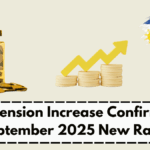For Filipino retirees, securing stable income during retirement is essential—and often, that means turning to government pension systems. But what happens if you’ve contributed to both the Social Security System (SSS) and the Government Service Insurance System (GSIS)? Many wonder if it’s possible to receive both pensions at the same time. In this guide, we answer that question clearly and comprehensively, focusing on the rules surrounding SSS and GSIS Combined Pensions and the official eligibility and conflict rule in the Philippines.
Understanding the regulations is crucial, especially for those who have worked in both the private and public sectors. Overlapping pension claims can lead to confusion, delays, or even denial of benefits if not handled properly.

What Are SSS and GSIS?
Before diving into the eligibility details, it’s important to understand what these systems are:
-
SSS (Social Security System) is the pension fund for private-sector employees and self-employed individuals in the Philippines.
-
GSIS (Government Service Insurance System) covers civil servants, government employees, and certain public sector workers.
Each system has its own contribution structure, retirement rules, and benefit computation methods. Those who have worked under both may ask if SSS and GSIS Combined Pensions are allowed under the current eligibility and conflict rule.
Can You Receive Both SSS and GSIS Pensions?
Yes, it is possible to receive SSS and GSIS Combined Pensions, but there are conditions under the eligibility and conflict rule. The key factors include employment history, contribution records, and compliance with both systems’ retirement eligibility.
Here’s a simplified table to explain when dual pension entitlement is possible:
| Employment History | Eligibility for Both Pensions | Notes |
|---|---|---|
| Worked in private and then government sector | Yes, if qualified under both systems | Must meet minimum years of service |
| Transferred to GSIS with refund from SSS | No | Prior SSS contributions refunded/forfeited |
| Simultaneous SSS and GSIS contributions | No | Not allowed under pension guidelines |
| Government worker with no prior SSS | Only GSIS pension | Not eligible for SSS benefits |
To receive both pensions, a retiree must have separate and complete contribution records with both agencies and meet all requirements for each. If SSS contributions were refunded upon entering government service, that disqualifies them from future SSS benefits.
Key Rules to Remember About Eligibility and Conflict
The eligibility and conflict rule exists to prevent double compensation for the same period of service. Here’s what retirees should keep in mind:
-
No overlapping contributions: You can’t contribute to both SSS and GSIS simultaneously and expect benefits from both for the same time period.
-
Refund of contributions cancels pension rights: If you refunded your SSS contributions when transferring to government service, you lose the right to an SSS pension.
-
Dual entitlement allowed if work periods are separate: You may receive both pensions if your time with SSS and GSIS is distinct and complete.
This rule ensures fairness and accurate fund allocation while preventing abuse of the pension systems.
How to File for Both SSS and GSIS Pensions
If you’re qualified under the SSS and GSIS Combined Pensions guidelines, follow these steps for each agency:
For SSS:
-
Confirm contribution history (at least 120 monthly contributions)
-
Reach retirement age (60 or 65 depending on employment status)
-
Submit a retirement claim through the SSS branch or online portal
For GSIS:
-
Complete at least 15 years of service
-
Reach retirement age (60), unless optional or early retirement applies
-
File your retirement application via GSIS Touch or a GSIS branch
It’s advisable to coordinate with both agencies early to avoid delays or conflicts under the eligibility and conflict rule. Documentation must be complete and accurate for both applications to be processed efficiently.
Conclusion: Know Your Rights and Plan Ahead
Receiving both SSS and GSIS Combined Pensions is indeed possible for Filipinos who have served in both private and public sectors—provided they meet the right criteria. The eligibility and conflict rule plays a crucial role in determining whether you’re entitled to both or just one of these pensions.
Planning early and verifying your records with both agencies can help prevent future problems. Don’t wait until retirement age—review your contributions, understand the rules, and seek assistance from SSS or GSIS representatives if needed. Doing so ensures you maximize the benefits you’ve worked hard for across your career.
FAQs
Can I receive both SSS and GSIS pensions in the Philippines?
Yes, as long as you meet the eligibility criteria for both systems and your employment periods do not overlap.
What is the eligibility and conflict rule?
It’s a guideline that prevents retirees from claiming benefits from both SSS and GSIS for the same period of service or contributions.
What disqualifies me from dual pensions?
Refunding your SSS contributions upon transferring to GSIS or having overlapping work periods with both systems can disqualify you.
Can I reapply for SSS benefits after getting a refund?
No. Once you’ve refunded your SSS contributions, you’re no longer eligible for an SSS pension.
How many years do I need to qualify for each pension?
SSS requires at least 120 monthly contributions (10 years), while GSIS requires at least 15 years of service.
Is it better to combine my SSS and GSIS service?
Combining is not allowed. You must keep them separate to qualify for each independently, under the rules of SSS and GSIS Combined Pensions.
Click here to learn more



